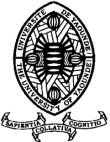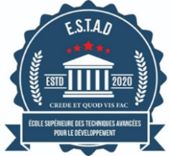Outcome of Surgical Treatment of Adult’s Olecranon Fracture in Yaoundé
Résultat du Traitement Chirurgical de la Fracture de l'Olécrane de l'Adulte à Yaoundé
Keywords:
olecranon fracture, tension band wiring, plate fixation, resultsAbstract
RÉSUMÉ
Introduction. Multiple surgical options exist for the treatment of olecranon fractures. The aim of our study was to describe and compare the results of different olecranon fracture fixation techniques in five hospitals in the city of Yaoundé. Methodology. We conducted a retrospective cohort study in five university hospitals in the city of Yaoundé. Included were all patients over 18 years of age who underwent surgery for olecranon fracture between January 2015 and December 2020, and were followed up for at least 6 months. Results. We studied 59 adults. The mean age was 33.4 ± 12.7 years with a sex ratio M/F of 3.9. Twenty (33.9%) fractures were type I, 30 (50.8%) were type IIA, and 9 (15.2%) were type IIB. The types of fixations were Tension-band Wiring (TBW) in 50 (84.7%) cases and Plate Fixation (PF) in 9 (15.3%) cases. Type I and IIA fractures were fixed by TBW, while all IIB fractures were fixed by PF. The overall consolidation rate was 93.2%. The most common complications were elbow stiffness (23.7%) and cutaneous impingement of osteosynthesis material (6.7%). The mean MEPI score was 85.6 ± 12.9 and the functional score was good to excellent 81.5% of the cases. There was no significant difference between the two types of fixations, apart from elbow stiffness, which was more common in PF (OR= 0.17; 95% CI: 0.03-0.78; p=0.02). Conclusion. Tension-band wiring and Plate fixation give good results in the treatment of olecranon fractures in Yaounde. Apart from elbow stiffness, there was no significant difference in outcome between the two techniques.
ABSTRACT
Introduction. Plusieurs options chirurgicales existent pour le traitement des fractures de l'olécrâne. L'objectif de notre étude était de décrire et de comparer les résultats de différentes techniques de fixation des fractures de l'olécrâne dans cinq hôpitaux de la ville de Yaoundé. Méthodologie. Nous avons mené une étude de cohorte rétrospective dans cinq hôpitaux universitaires de la ville de Yaoundé. Ont été inclus tous les patients de plus de 18 ans ayant subi une chirurgie pour une fracture de l'olécrâne entre janvier 2015 et décembre 2020, et ayant été suivis pendant au moins 6 mois. Résultats. Nous avons étudié 59 adultes. L'âge moyen était de 33,4 ± 12,7 ans avec un ratio hommes/femmes de 3,9. Vingt (33,9%) fractures étaient de type I, 30 (50,8%) étaient de type IIA et 9 (15,2%) étaient de type IIB. Les types de fixations étaient le cerclage tendineux (CT) dans 50 (84,7%) cas et la fixation par plaque (FP) dans 9 (15,3%) cas. Les fractures de type I et IIA ont été fixées par CT, tandis que toutes les fractures de type IIB ont été fixées par FP. Le taux de consolidation global était de 93,2%. Les complications les plus courantes étaient la raideur du coude (23,7%) et la pincement cutané du matériel d'ostéosynthèse (6,7%). Le score MEPI moyen était de 85,6 ± 12,9 et le score fonctionnel était bon à excellent dans 81,5% des cas. Il n'y avait pas de différence significative entre les deux types de fixations, à l'exception de la raideur du coude, qui était plus fréquente dans la FP (OR= 0,17; IC à 95 %: 0,03-0,78; p=0,02). Conclusion. Le cerclage tendineux et la fixation par plaque donnent de bons résultats dans le traitement des fractures de l'olécrâne à Yaoundé. Mis à part la raideur du coude, il n'y avait pas de différence significative dans les résultats entre les deux techniques.
References
Rommens PM, Küchle R, Schneider RU, Reuter M. Olecranon fractures in adults: factors influencing outcome. Injury 2004;35(11):1149‑57.
Rantalaiho IK, Miikkulainen AE, Laaksonen IE, Äärimaa VO, Laimi KA. Treatment of Displaced Olecranon Fractures: A Systematic Review. Scand J Surg SJS Off Organ Finn Surg Soc Scand Surg Soc. 2021;110(1):13‑21.
Baecher N, Edwards S. Olecranon fractures. J Hand Surg. J Hand Surg Am; 2013;38(3).
Wilkerson JA, Rosenwasser MP. Surgical techniques of olecranon fractures. J Hand Surg. 2014;39(8):1606‑14.
Yi-Ming Ren, Hu-Yun Qiao, Zhi-Jian Wei et al. Efficacy and safety of tension band wiring versus plate fixation in olecranon fractures: a systematic review and meta-analysis J Orthop Surg Res 2016 Nov 14;11(1):137.
Chalidis BE, Sachinis NC, Samaladas EP, Dimitriou CG, Pournaras JD. Is tension band wiring technique the « gold standard » for the treatment of olecranon fractures? A long term functional outcome study. J Orthop Surg Res 2008;3.
Claessen FMAP, Braun Y, Peters RM, Dyer G, Doornberg JN, Ring D. Factors Associated With Reoperation After Fixation of Displaced Olecranon Fractures. Clin Orthop. 2016;474(1):193‑200.
Karlsson MK, Hasserius R, Besjakov J, Karlsson C, Josefsson PO. Comparison of tension-band and figure-of-eight wiring techniques for treatment of olecranon fractures. J Shoulder Elbow Surg. 2002;11(4):377‑82.
Phadnis JS, Vaughan A, Luokkala T, Peters J, Watson JJ, Watts A. Comparison of all suture fixation with tension band wiring and plate fixation of the olecranon. Shoulder Elb. 2020;12(6):414‑21.
Romero JM, Miran A, Jensen CH. Complications and re-operation rate after tension-band wiring of olecranon fractures. J Orthop Sci 2000;5(4):318‑20.
Duckworth AD, Clement ND, White TO, Court-Brown CM, McQueen MM. Plate Versus Tension-Band Wire Fixation for Olecranon Fractures: A Prospective Randomized Trial. J Bone Joint Surg Am. 2017;99(15):1261‑73.
Morrey BF, An K-N: Functional evaluation of the elbow. In: Morrey BF (Ed.) Morrey’s the Elbow and its Disorders. WB Saunders, Philadelphia, PA, 1993, 86 pp.
Duckworth AD, Clement ND, White TO, Court-Brown CM, McQueen MM. Plate Versus Tension-Band Wire Fixation for Olecranon Fractures: A Prospective Randomized Trial. J Bone Joint Surg Am. 2017;99(15):1261‑73.
Liu Q-H, Fu Z-G, Zhou J-L, Lu T, Liu T, Shan L, et al. Randomized prospective study of olecranon fracture fixation: cable pin system versus tension band wiring. J Int Med Res. 2012;40(3):1055‑66.
Ikeda M, Fukushima Y, Kobayashi Y, Oka Y. Comminuted fractures of the olecranon. Management by bone graft from the iliac crest and multiple tension-band wiring. J Bone Joint Surg Br. 2001;83(6):805‑8.
Gordon MJ, Budoff JE, Yeh ML, Luo Z-P, Noble PC. Comminuted olecranon fractures: a comparison of plating methods. J Shoulder Elbow Surg. 2006;15(1):94‑9.
Powell AJ, Faehan-Alanie OM, Bryceland JK, Nunn T. The treatment of olecranon fractures in adults. Musculoskelet Surg 2017 2017 Apr;101(1):1-9.
Cornefjord G, Kostogiannis I, Rogmark C, Jerrhag D, Wenger D. The With Or Without Olecranon K-wire (WOW OK) Trial of tension band wire fixation versus cerclage fixation without K-wires in displaced stable olecranon fractures: study protocol for a randomized controlled trial. Trials. BioMed Central 2023;24(1):1‑11.
Bateman DK, Barlow JD, VanBeek C, Abboud JA. Suture anchor fixation of displaced olecranon fractures in the elderly: a case series and surgical technique. J Shoulder Elbow Surg. juill 2015;24(7):1090‑7.
Nowak TE, Burkhart K, Mueller LP, Mattyasovszky SG, Andres T et al. New intramedullary locking nail for olecranon fracture fixation--an in vitro biomechanical comparison with tension band wiring. J Trauma 2010 ;69(5):E56-61
Nowotny J, Bischof F, Ahlfeld T, Goronzy J, Tille E, Nimtschke U, Biewener A. Biomechanical comparison of bi-and tricortical k-wire fxation in tension band wiring osteosynthesis. Eur J Med Res 2019; 24:33
Saeed ZM, Trickett RW, Yewlett AD, Matthews TJW. Factors influencing K-wire migration in tension-band wiring of olecranon fractures. J Shoulder Elbow Surg 2014;1-6. doi.org/10.1016/j.jse.2014.02.018
Wang K, Lub Ye, Shen Y, Cai W , Zhan S, Ding J. Where should the pins be placed to decrease the failure rate after fixation of a Mayo IIA olecranon fracture? A biomechanical analysis Injury 2020; doi.org/10.1016/j.injury.2020.04.018
Van der Linden SC, Kampen AV, Jaarsma RL. K-wire position in tension-band wiring technique affects stability of wires and long-term outcome in surgical treatment of olecranon fractures. J Shoulder Elbow Surg 2012; 21:405-411
Downloads
Published
How to Cite
Issue
Section
License
Authors who publish with this journal agree to the following terms:
- Authors retain copyright and grant the journal right of first publication with the work simultaneously licensed under a Creative Commons Attribution License CC BY-NC-ND 4.0 that allows others to share the work with an acknowledgement of the work's authorship and initial publication in this journal.
- Authors are able to enter into separate, additional contractual arrangements for the non-exclusive distribution of the journal's published version of the work (e.g., post it to an institutional repository or publish it in a book), with an acknowledgement of its initial publication in this journal.
- Authors are permitted and encouraged to post their work online (e.g., in institutional repositories or on their website) prior to and during the submission process, as it can lead to productive exchanges, as well as earlier and greater citation of published work










